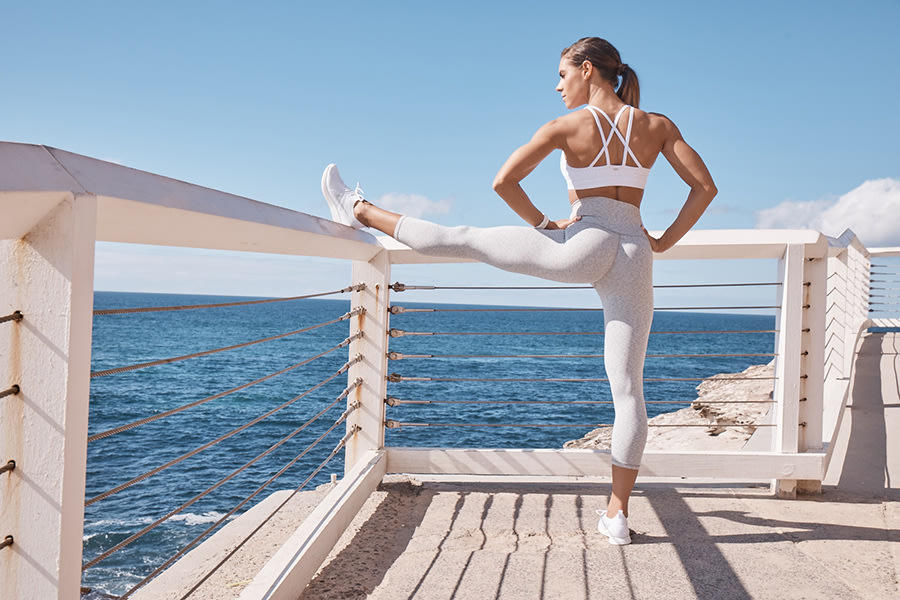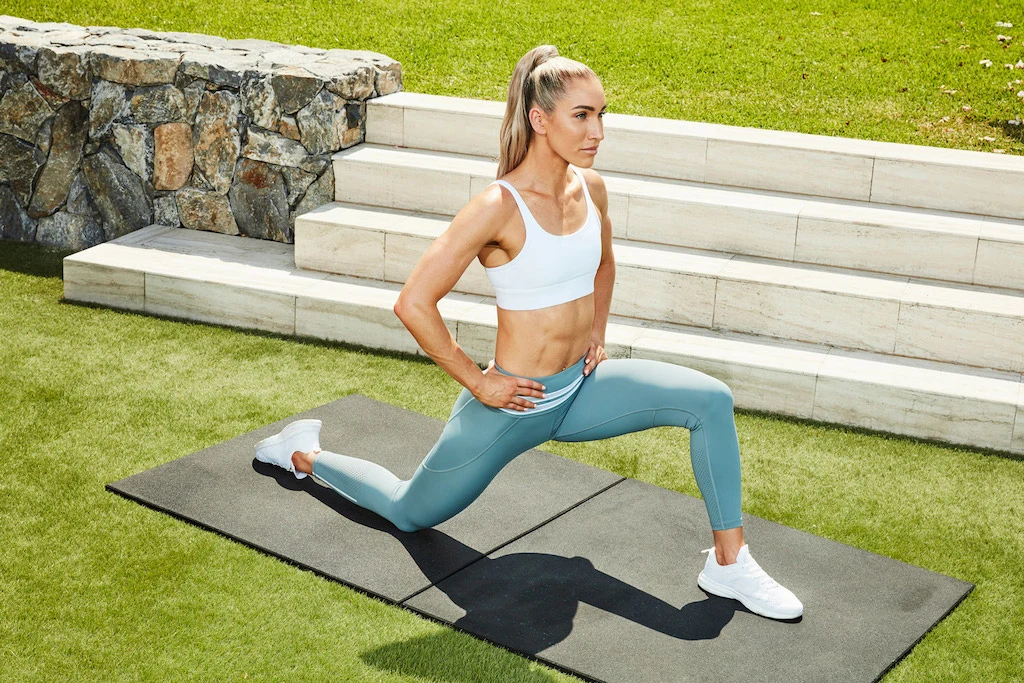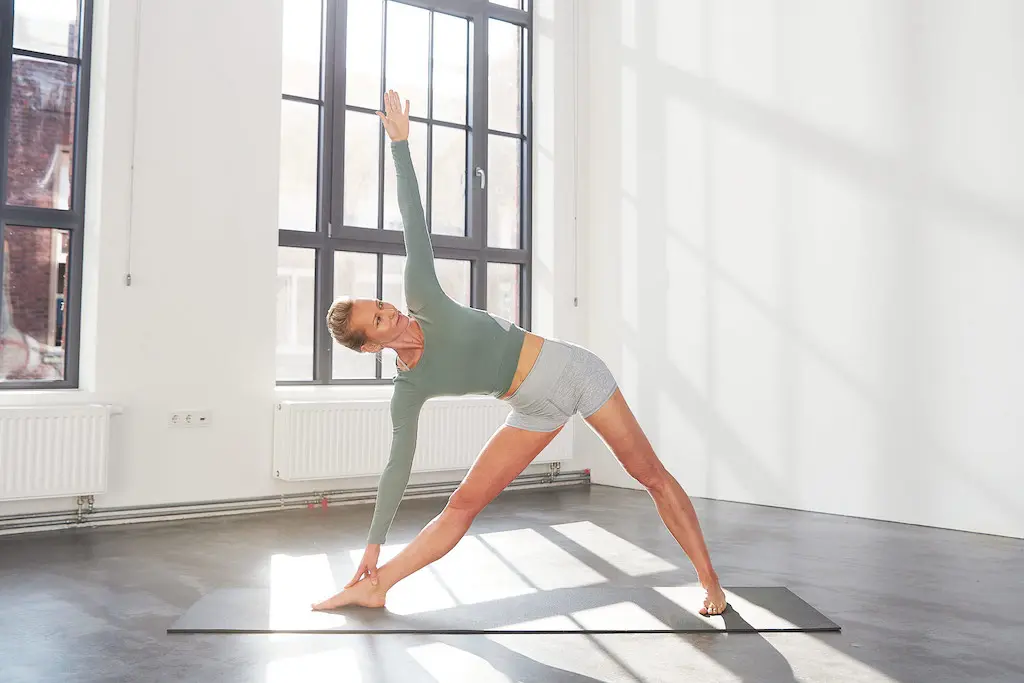6 Leg Day Workout Tips For Women

January 21, 2019

Being healthy is about feeling your best, in all areas of your life. Training your lower body can help increase strength in your legs, glutes and hips, and improve your mobility, so you can go about your day with ease and enjoy more of the activities you love!
As your body’s muscles are interdependent, strengthening your lower body can help you avoid imbalances and compensation in other areas which can lead to soreness or injury.
Here's how you can maximise your next leg day, and how to intensify some of the exercises you might currently be doing.
How to make the most out of leg day
An effective lower body workout focuses on strengthening, lengthening and activating specific muscle groups, and choosing a training style that’s perfect for your goals. Here are six of our best tips to try next leg day.
Activate your glutes
It’s important to focus onglute activation before you begin a lower body workout.
Glute activation essentially means “waking up” your glutes (or butt muscles) through specific exercises that isolate this muscle area. This can help benefit your performance during compound movements such as squats and deadlifts.
Don’t forget your hamstrings
Hamstring exercises are also important if you’re looking to develop lower body strength and muscle.
Your hamstrings are a group of muscles located at the back of your thighs, which contribute to functional movement (your ability to perform daily activities). If your hamstrings are strong, they can help you run faster, jump higher and complete more explosive lower-body exercises.
If you are naturally more quad-dominant or tend to use the quad muscles more than other areas, strengthening your hamstrings can help improve your posture and prevent injury and muscle weakness.

…and your hip flexors
Your hip flexors are muscles that allow you to move at your waist and lift your knees — when they are tight or weak, it can lead to muscle pain in your lower body, a weak core, or even back pain.
A sedentary lifestyle, such as working an office job or sitting down for extended periods can also contribute to tight hip flexors.
Targeted exercises like glute bridges can be incorporated into your lower body workout to help build strength in your hip flexors, and hip flexor stretches can be done after any workout to relieve tightness or pain.
Work on your mobility and range of motion
Lower body mobility, or range of motion, means moving freely through all of the major joints in your lower body, including your hips, knees and ankles.
According to the American College of Sports Medicine, pre and post-workout stretching, foam rolling and mobility exercises are all effective muscle recovery methods that can help improve your flexibility and range of motion by increasing blood flow and reducing stiffness.
Add resistance where possible
When you are comfortable with an exercise, adding resistance can allow you to progressively overload and ensure you are making consistent progress.
If you don't have access to barbells, dumbbells or machines, ankle weights and resistance bands are a good way to force your muscles to work harder and maximise results from your workout. If you are using ankle weights for the first time, start by including them during low-intensity cardio workouts, and when you are feeling confident you can try incorporating them into your Sweat program.

Try yoga
The NHS recommends yoga for strength, flexibility, balance and coordination. As yoga helps to improve lower body strength, it can also reduce your risk of falls as you get older.
A 2019 systematic review and meta-analysis exploring the effects of yoga in older adults from the International Journal of Behavioural Nutrition and Physical Activity found yoga had positive effects. The review highlighted how yoga enhances functional strength and quality of life by improving lower body flexibility and strength, while also promoting a number of mental health benefits.
Whether it’s doing a yoga flow for tight hips, or restorative yoga for stress relief, yoga asanas can help to counterbalance high-intensity workouts or weight training sessions.
Incorporate these workout tips on your next leg day
Whether you are preparing for a marathon, want to improve your overall fitness or become your strongest self, it’s important to take a dedicated and focused approach when it comes to your health and fitness journey.
Knowing what to prioritise during your workouts can help you reduce your risk of injury and get the most out of your training.
What goals are you setting this year? Let us know in the comments!

A more empowered you starts with Sweat, and our editorial team is here to bring you the latest fitness tips, trainer recommendations, wellbeing news, nutritional advice, nourishing recipes and free workouts.
* Disclaimer: This blog post is not intended to replace the advice of a medical professional. The above information should not be used to diagnose, treat, or prevent any disease or medical condition. Please consult your doctor before making any changes to your diet, sleep methods, daily activity, or fitness routine. Sweat assumes no responsibility for any personal injury or damage sustained by any recommendations, opinions, or advice given in this article.
Fitness